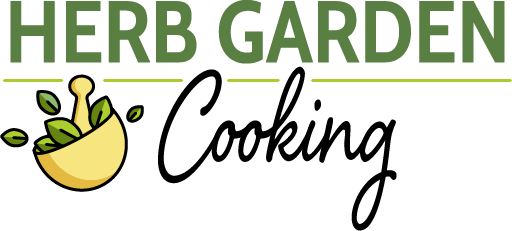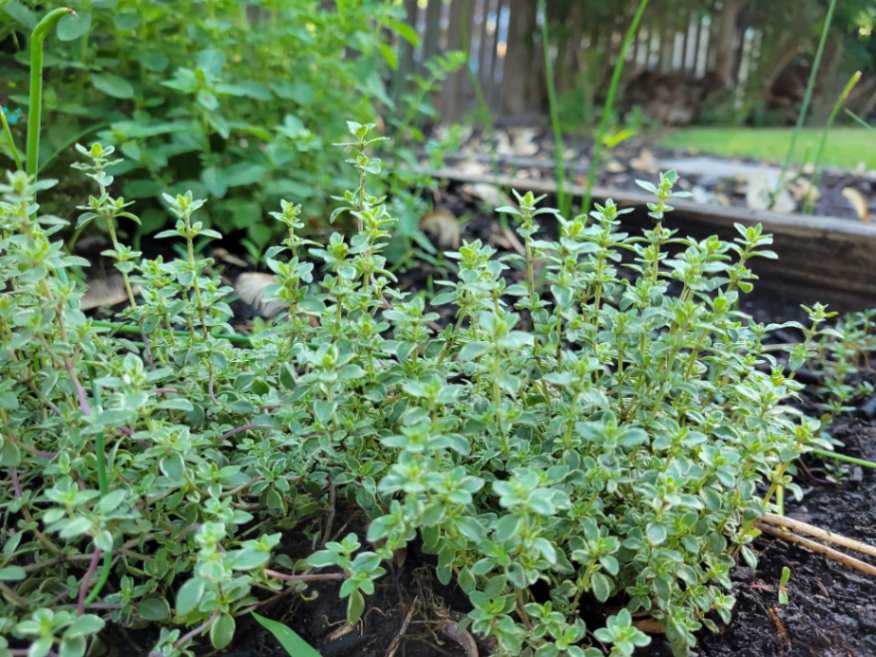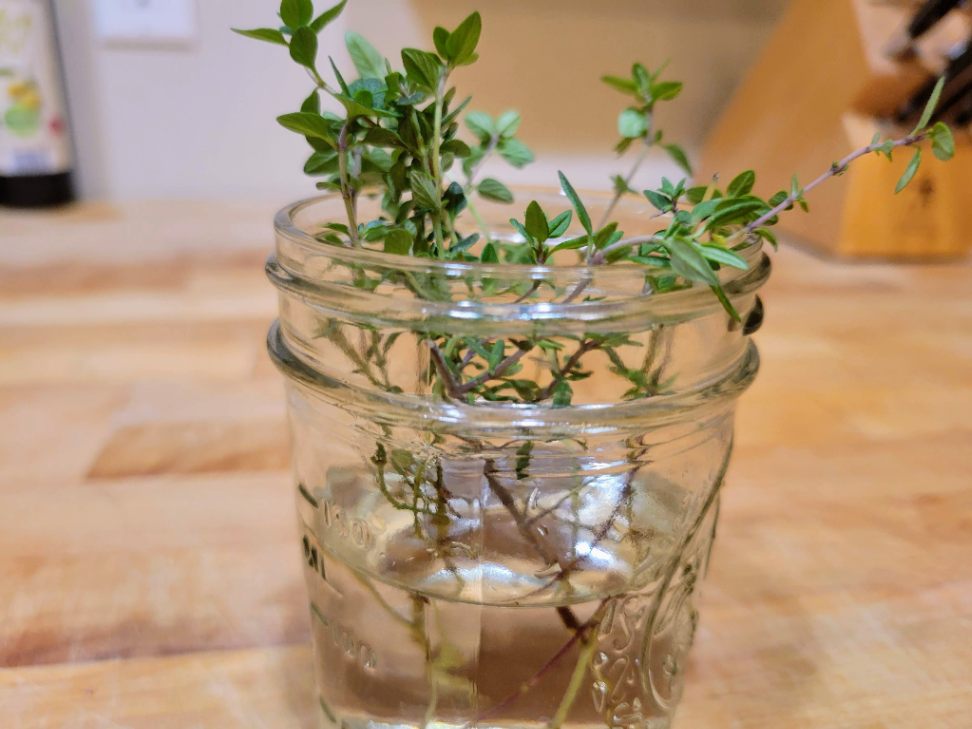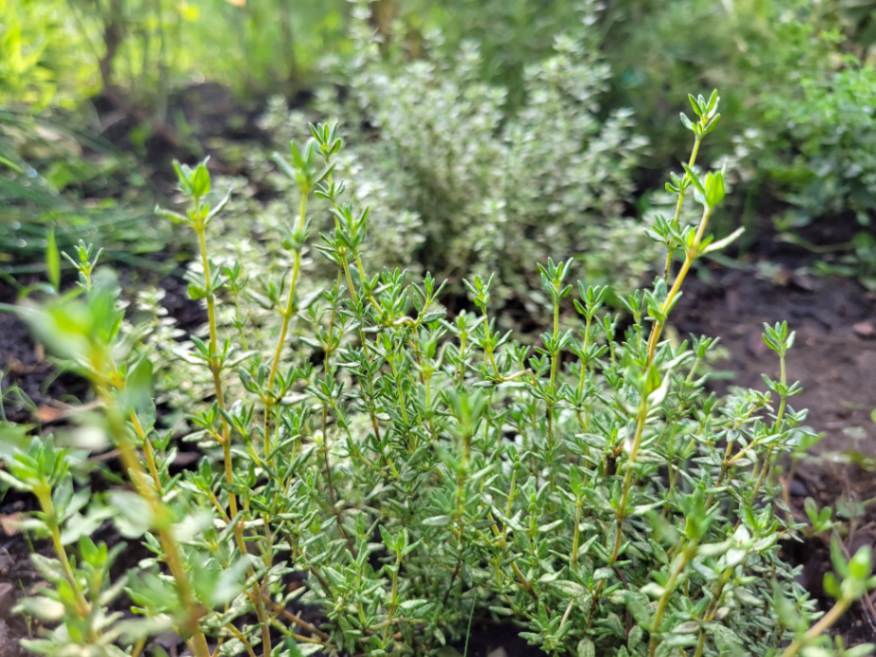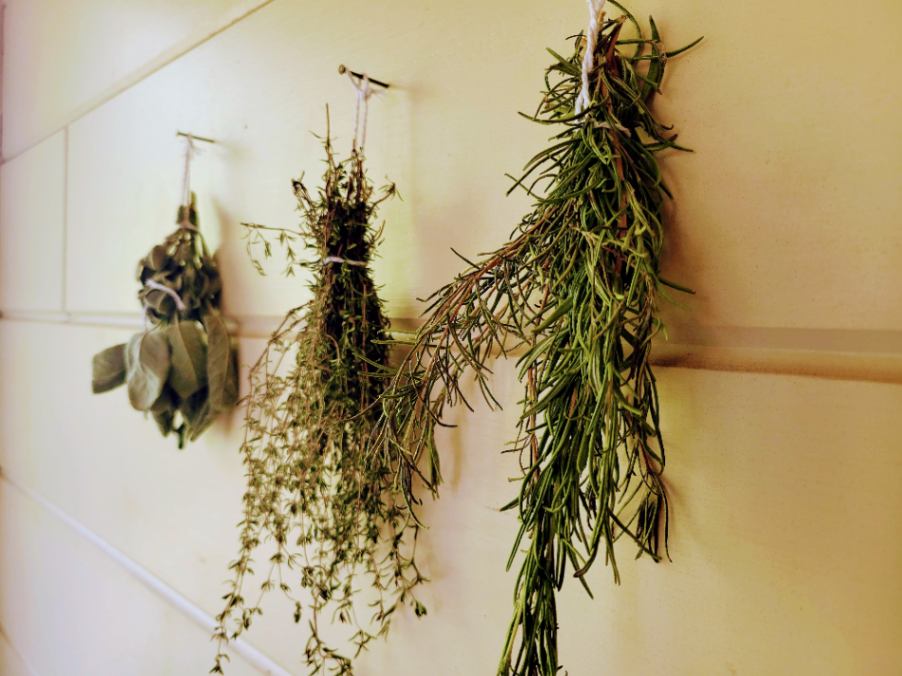This post may contain affiliate links which means I may receive a commission for purchases made through links. I only recommend products that I have personally used. As an Amazon Associate I earn from qualifying purchases. Learn more on my Private Policy page.
Thyme is a drought-tolerant herb native to the Mediterranean, renowned for its versatility in the kitchen and ease of cultivation. Discover the journey of thyme from garden to table, exploring its cultivation, harvesting methods, culinary versatility, health benefits, and its rich cultural and historical backdrop.
Table of Contents
Growing Thyme
Let’s dig deeper into the optimal growing conditions for thyme, including its preferred soil type, moisture levels, and sunlight requirements, along with practical advice on planting and caring for this versatile herb.
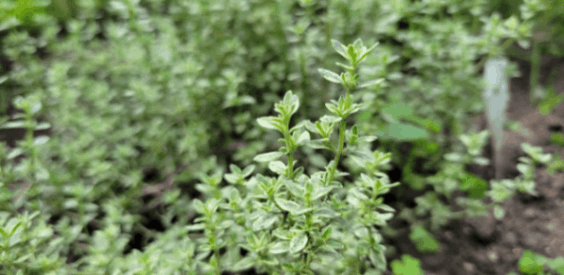
Thyme’s Soil, Moisture, and Light Requirements
- Thyme thrives in well-drained soil, ideally loamy or sandy, which allows roots to absorb nutrients without becoming wa. The optimal soil pH for thyme ranges from 6 to 8.
- Thyme has moderate watering requirements but can tolerate some drought. Let the soil dry slightly between waterings, avoiding overwatering to maintain healthy growth and aroma.
- Thyme prefers full sun for at least 6 hours daily for best growth. A sunny location is key for the herb to thrive and yield flavorful leaves.
Thyme Planting and Cultivation
To cultivate thyme, you can either start from seeds or purchase young plants from nurseries. When growing thyme from seeds, begin indoors about eight weeks before the last frost date. See my article on How to Grow Herbs from Seeds Indoors for more info.
Transplant thyme outdoors in the springtime after the last frost. When placing your thyme plants in the ground or containers, make sure to space them around 12 inches apart. This allows sufficient air circulation and prevents overcrowding as they grow.
Planting Thyme: How to Grow Thyme at Home
Discover essential steps for successfully planting thyme. A comprehensive guide to growing and caring for your thyme plants. Read More…
How to Grow Thyme from Cuttings in Water
Discover the secrets of growing thyme from cuttings in water with this step-by-step guide. Get tips on selecting, rooting, and potting thyme cuttings for a thriving herb garden. Read More…
Caring for Thyme Plants
Thyme plants require minimal maintenance once established but benefit from regular care to ensure their health and productivity.
- Prune thyme regularly to encourage bushy growth and new shoots.
- Mulch thyme with organic materials like straw or wood chips to suppress weeds and retain soil moisture.
- Fertilize only sparingly, if at all. Herbs typically don’t require a lot of fertilizer for healthy growth. When fertilizing thyme, less is more.
Companion Planting with Thyme
Thyme flourishes alongside various herbs like rosemary, oregano, and sage, as well as vegetables and fruits including tomatoes, cabbage, potatoes, strawberries, and blueberries. These companion plants enhance the garden by deterring pests and promoting healthy growth, leading to a balanced and thriving garden ecosystem.
However, not all plants make ideal companions for thyme. Herbs like chives, basil, and cilantro may not be the most compatible neighbors. Despite thyme’s versatility in companion planting, these particular herbs can introduce challenges that potentially compromise the vitality of your herb garden, especially when planted near thyme.
What Grows Well with Thyme?
Discover the best and worst thyme companion plants for successful pairings. Learn what to grow (and what not to grow) with thyme. Read More…
Can Rosemary and Thyme Be Planted Together?
Discover tips and tricks on how to grow rosemary and thyme together. These garden herbs not only enhance your dishes but also thrive together due to their shared growing preferences. Read More…
Thyme’s Hardiness
Thyme is known for its hardiness, making it an excellent addition to any herb garden. Thyme varieties are generally hardy in USDA zones 5 to 9.
In regions where winter temperatures drop significantly, proper protection is necessary to ensure the survival of thyme plants. Applying a layer of mulch around the base of each plant before winter sets in helps insulate the roots and protects them from extreme cold. Consult the USDA Hardiness Zones Map to find what zone you live in.
Harvesting and Preserving Thyme
You can snip sprigs from your thyme plants throughout the growing season to harvest it.
- Harvest thyme before it flowers. This is when essential oils are at their peak for the best flavor.
- Harvest no more than one-third of the plant’s foliage during each harvest to promote ongoing growth and vitality.
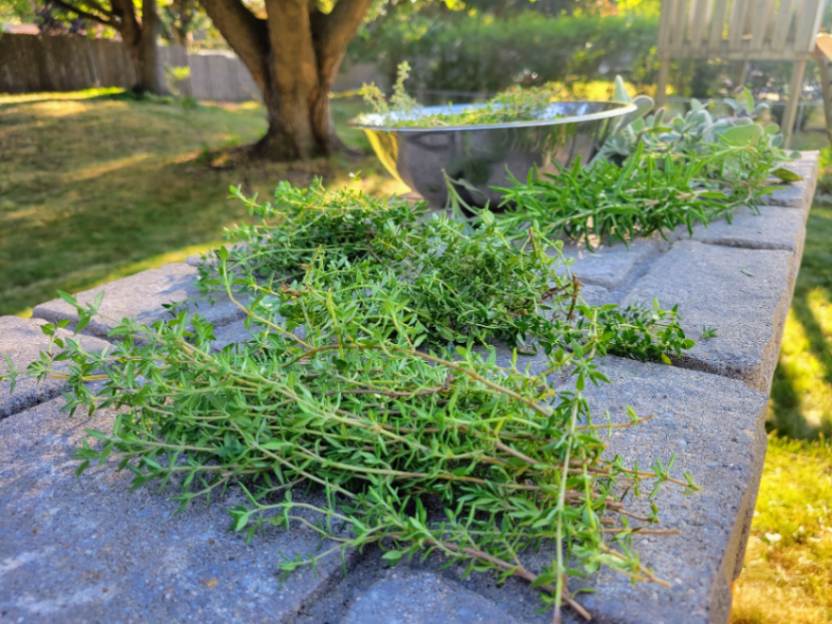
Thyme Preservation Methods
Preserving thyme is crucial for maintaining its flavor and aroma throughout the year. Here are four effective methods to ensure you can enjoy this versatile herb anytime:
- Air drying is the most commonly used method for preserving thyme leaves for long-term use. Hang thyme sprigs upside down in a warm, ventilated area and let them dry for 2 weeks.
- Freezing thyme leaves is another effective preservation method. Remove the leaves from the stems and store them in airtight freezer bags or containers for off-season use.
- Making herb-infused oils can be another way to preserve thyme’s essence. See my article on the 7 Best Culinary Herbs for Infused Oils (& How to Infuse Them) for a step-by-step guide.
- Using Dehydrators: Speed up drying with a dehydrator, preserving flavor efficiently compared to air drying.
How to Dry Rosemary, Sage, Thyme & Oregano
Learn how to dry thyme, sage, rosemary, and oregano using preferred methods like air drying and dehydration. Preserve the natural oils and flavors of your hardy herbs with step-by-step instructions. Read More…
Storing Thyme for Long-Term Use
Once your thyme has been properly preserved, it is crucial to store it correctly to maintain its quality. Store dried thyme in airtight containers in a cool, dark place away from direct sunlight and moisture.
Properly stored dried thyme can retain its flavor for up to one year, allowing you ample time to enjoy its culinary benefits. To ensure freshness, it is recommended to label the containers with the date of storage, allowing you to keep track of their shelf life.
Types of Thyme for Cooking: 6 Most Common Culinary Varieties
Discover the most common types of thyme for cooking. Learn about different varieties and how to grow them in your home herb garden. Read More…
Culinary Uses of Thyme
Thyme is widely used in cooking for its robust, earthy flavor and aromatic qualities. It’s commonly used in various dishes, from seasoning meats, soups, and sauces to enhancing the flavors of vegetables and being a key ingredient in herb blends like bouquet garni and herbes de Provence.
Thyme Flavor Profile
Thyme is celebrated for its unique blend of warm, earthy, and mildly minty flavors, accented with lemon and pine notes. This versatile herb greatly enhances the taste of various dishes, adding aromatic depth and complexity. It is crucial in Mediterranean, French, and Italian cooking styles.
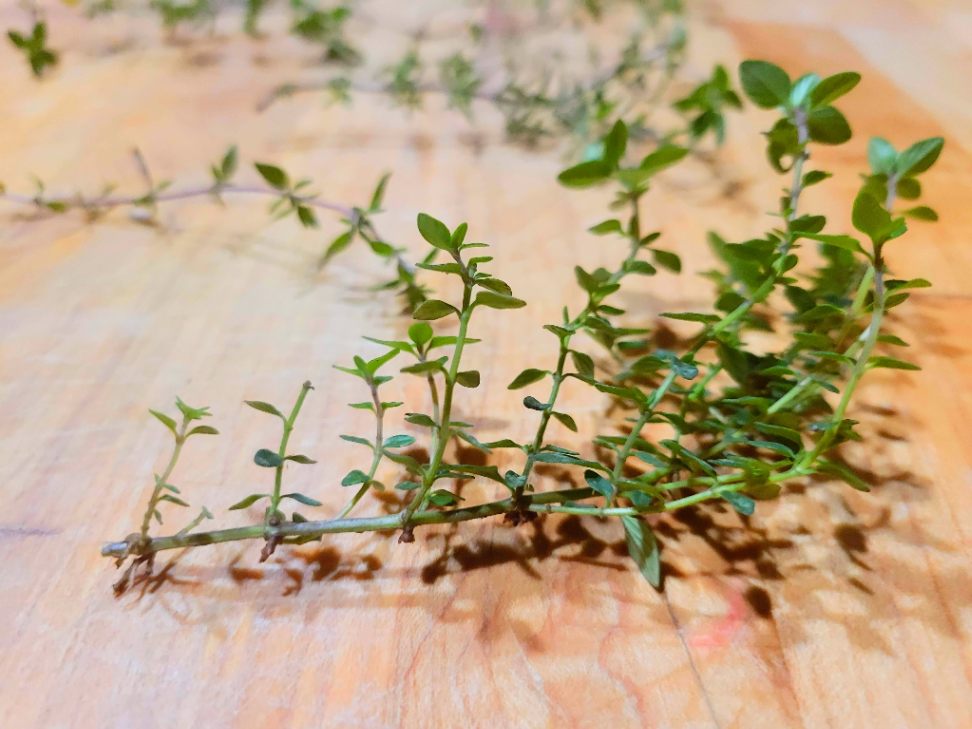
Ways to Use Thyme When Cooking
To make the most of thyme’s unique flavor, you can incorporate it into your cooking in several ways. Some examples include:
- Roasted Chicken or Grilled Fish: Add fresh or dried thyme to elevate these proteins with a delightful aroma and extra savory flavor.
- Thyme-Infused Olive Oil: Combine fresh thyme sprigs with olive oil in a jar and let steep for a few days. Use as a flavorful dressing or marinade for salads or as a cooking base.
- Homemade Herb Butter: Mix softened butter with chopped fresh thyme leaves for a burst of flavor. Spread on bread or melt over vegetables.
- Roasted Potatoes: Sprinkle potatoes with olive oil, salt, pepper, and dried thyme before roasting to add a fragrant touch and enhance earthiness.
- Soups, Stews, and Sauces: Add thyme to impart a rich, herbaceous taste.
- Garnishing: Use thyme leaves as an aromatic and visually appealing garnish.
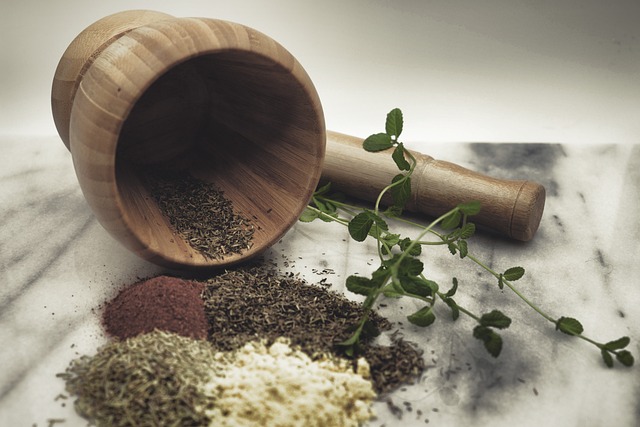
Thyme is a great herb to add flavor to many dishes. Whether you’re seasoning meats or adding it to sauces, thyme’s unique flavor can transform simple recipes into culinary delights.
Nutritional and Medicinal Benefits
Beyond its culinary applications, thyme has been traditionally used in various cultures for its potential health benefits.
Nutritional Value of Thyme
Incorporating thyme into your diet may help to support immune function as it is a great source of vitamins and minerals.
- Antioxidants: Thyme is high in vitamins A and C, which help protect cells from oxidative damage. Vitamin C, in particular, is a strong antioxidant that neutralizes free radicals, reducing oxidative stress.
- Minerals: Thyme contains iron, manganese, and copper, essential for various bodily functions.
Potential Health Benefits of Thyme
Thyme has been used for centuries as a natural remedy for various ailments. Its traditional uses include treating coughs, sore throats, and bronchitis. The essential oil derived from thyme is renowned for its antiseptic properties and is commonly utilized in aromatherapy practices. Furthermore, thyme tea can be beneficial in alleviating digestive issues such as bloating and indigestion.

- Antioxidant Activity: Thyme contains potent antioxidants that may help protect against chronic diseases associated with oxidative stress, such as heart disease and cancer.[1]
- Antimicrobial Properties: Thyme essential oil, containing thymol as its major component, exhibits antimicrobial activity against various bacteria and fungi. This property may be beneficial for respiratory health and wound healing.[2]
- Digestive Support: Thyme tea has been traditionally used to alleviate digestive issues like bloating and indigestion. Although further research is needed, some evidence suggests it may help stimulate digestive enzymes.[3]
- Respiratory Support: Thyme has expectorant properties that may help loosen mucus and relieve congestion, making it a potential remedy for coughs and sore throats.[4]
- Aromatherapy Applications: Thyme essential oil possesses antiseptic properties and is used in aromatherapy practices to promote relaxation and reduce stress.[5]
Important Considerations
- While thyme is generally safe for consumption, but if you have too much, it might upset your stomach.
- If you’re pregnant, breastfeeding, or taking any medications, it’s a good idea to talk to your doctor before you start using thyme supplements or essential oils.
- Remember, you should always dilute thyme essential oil before you apply it to your skin.

Cultural and Historical Significance of Thyme
Role of Thyme in Various Cultures and Historical Contexts
Thyme has played a significant role in various cultures and historical contexts. Let’s take a fascinating journey through history to explore the diverse and significant roles of thyme, from its use in ancient embalming to being a revered offering in religious ceremonies:
- Ancient Egypt: In ancient Egypt, thyme was highly regarded for its aromatic properties and was used in embalming practices. The Egyptians believed that the pleasant scent of thyme helped preserve the deceased’s body.[6]
- Greece and Rome: The Greeks and Romans also held thyme in high esteem, associating it with courage, strength, and purification rituals. They believed that thyme could invigorate both the body and mind. It was often used as an offering to their gods during religious ceremonies.
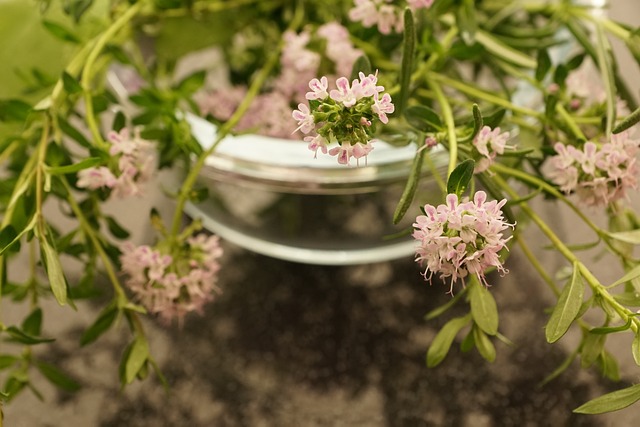
Symbolism and Folklore Associated with Thyme
Exploring the symbolism and folklore surrounding thyme, this humble herb has been known as a bearer of luck, protection, and bravery.[7]
- Luck and Protection: Thyme holds a special place in folklore, where it has been associated with various symbolic meanings. In many cultures, thyme was believed to bring good luck and protect against evil spirits. It was often used as an ingredient in incense or burned to purify spaces.
- Medieval Symbol of Bravery: During medieval times, thyme symbolized bravery and chivalry. Knights would wear sprigs of thyme on their armor or carry them into battle as a token of courage. Thyme’s association with bravery made it a popular herb among warriors.
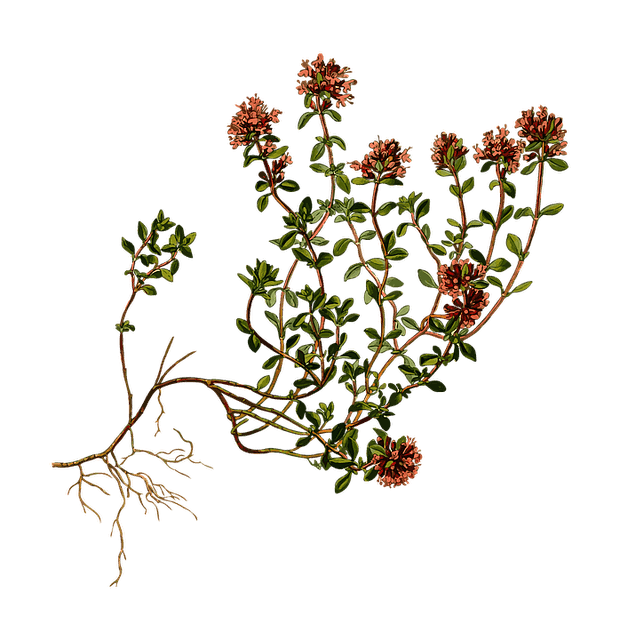
Frequently Asked Questions (FAQs)
How do I grow thyme?
To grow thyme, you can start by planting seeds or purchasing young plants from a nursery. Thyme prefers well-drained soil and plenty of sunlight. Regular watering and occasional pruning will help it thrive.
When should I harvest thyme?
Thyme can be harvested once it reaches about 6 inches in height. The best time to harvest is in the morning when the essential oils are at their peak concentration. Simply cut the stems close to the base of the plant.
How can I preserve thyme?
One way to preserve thyme is by drying it. You can hang small bunches upside down in a cool, dry place until they are completely dried. Another method is to freeze thyme leaves in ice cube trays with water or olive oil for easy use later on.
What are some culinary uses of thyme?
Thyme adds a delightful flavor to various dishes such as soups, stews, roasted meats, and vegetables. It pairs well with other herbs like rosemary and sage, enhancing the overall taste profile of your culinary creations.
References
- Singletary, Keith PhD. Thyme: History, Applications, and Overview of Potential Health Benefits. Nutrition Today 51(1):p 40-49, January/February 2016. | DOI: 10.1097/NT.0000000000000139
- Guarda A, Rubilar JF, Miltz J, Galotto MJ. The antimicrobial activity of microencapsulated thymol and carvacrol. Int J Food Microbiol. 2011 Mar 30;146(2):144-50. doi: 10.1016/j.ijfoodmicro.2011.02.011. Epub 2011 Feb 18. PMID: 21411168.
- WebMD Editorial Contributors. (2022, December 11). Health Benefits of Thyme. WebMD.com. https://www.webmd.com/diet/health-benefits-thyme
- Fanous, Summer. (2023, May 30). 12 Health Benefits of Thyme. Healthline.com. https://www.healthline.com/health/health-benefits-of-thyme
- Hammoudi Halat D, Krayem M, Khaled S, Younes S. A Focused Insight into Thyme: Biological, Chemical, and Therapeutic Properties of an Indigenous Mediterranean Herb. Nutrients. 2022 May 18;14(10):2104. doi: 10.3390/nu14102104. PMID: 35631245; PMCID: PMC9147557.
- Thyme. In Wikipedia. https://en.wikipedia.org/wiki/Thyme
- Undlin, Siri. (2020, September 25). The History of Thyme (Plus Uses of Thyme). PlantSnap. https://www.plantsnap.com/blog/the-history-of-thyme-plus-uses-of-thyme/
Last Updated on 10 December 2023 by Bob Lee
